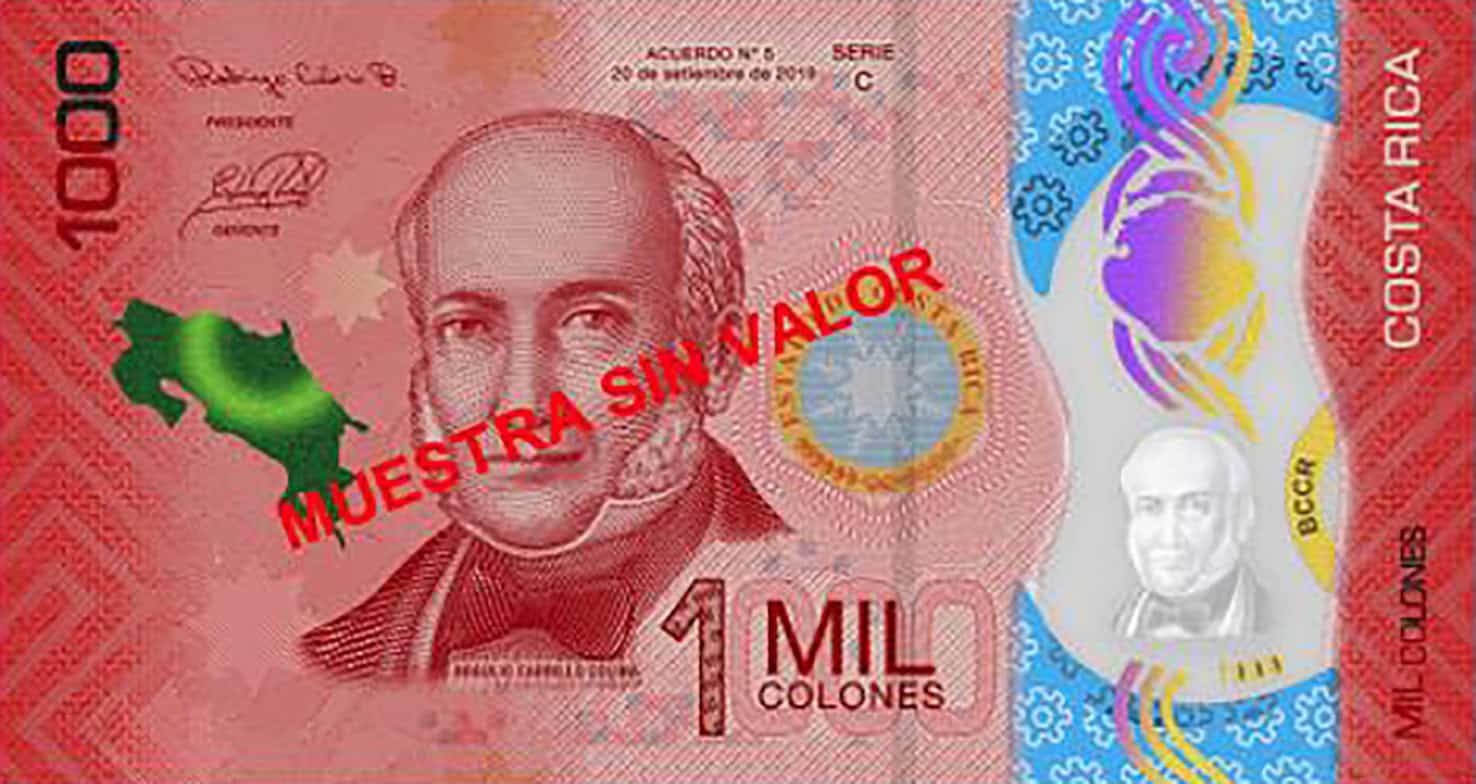During its first month in circulation, the new ₡1,000 bill, known colloquially as a “rojo” for its red color, has come under fire for the image of a small shield printed at its center that reads “Estado de Costa Rica,” or “State of Costa Rica.” The country is officially known as “The Republic of Costa Rica.”
On June 20, the Central Bank of Costa Rica (BCCR) began circulating the new ₡1,000 waterproof bills. In the weeks that followed, many Costa Ricans questioned the accuracy of the small blue and yellow shield and the Estado de Costa Rica label. According to Carlos Melegatti, BCCR director of financial services, the discrepancy became a larger topic of public discussion when a sports radio station during a midday broadcast urged the BCCR to recall the bill.
“It was amazing to see how many people actually listened to the sports station and believed the announcer when he said it was an error,” Melegatti said. “It turns out he doesn’t know much about soccer nor the history of the country.”
Bank officials say the Estado de Costa Rica shield was designed by Braulio Carrillo, Costa Rica’s first president, and whose face is on the new bill. When Costa Rica separated from the Federal Republic of Central America to become a sovereign state under Carrillo in 1938, he created the shield to commemorate the country’s independence. In a decree of independence in April 1840, Carrillo outlined his plans for the creation of a national shield.
“The shield of arms of the State will include a radiant star, located in the center of a circle with a sky-blue background and with the inscription on its circumference of ‘Estado de Costa Rica,’” he wrote.
Eight years later in 1848, President José María Castro formally declared the country’s independence and renamed the nation “The Republic of Costa Rica.”
Despite public calls to recall the new ₡1,000 bill for its alleged error, Melegatti said the BCCR would not modify the text on the shield from its original state.
“When Carrillo designed the shield, he designed it to say ‘State of Costa Rica,’” Melegatti said. “We can’t change a piece of national history to match changes that occurred after the shield was designed. When he created the shield in 1840, the country was known as ‘The State of Costa Rica.’”
To date, more than 20,000 red notes have been placed in circulation. The BCCR will phase out old bills by Aug. 31. On Sept. 1, those bills will no longer be accepted.







